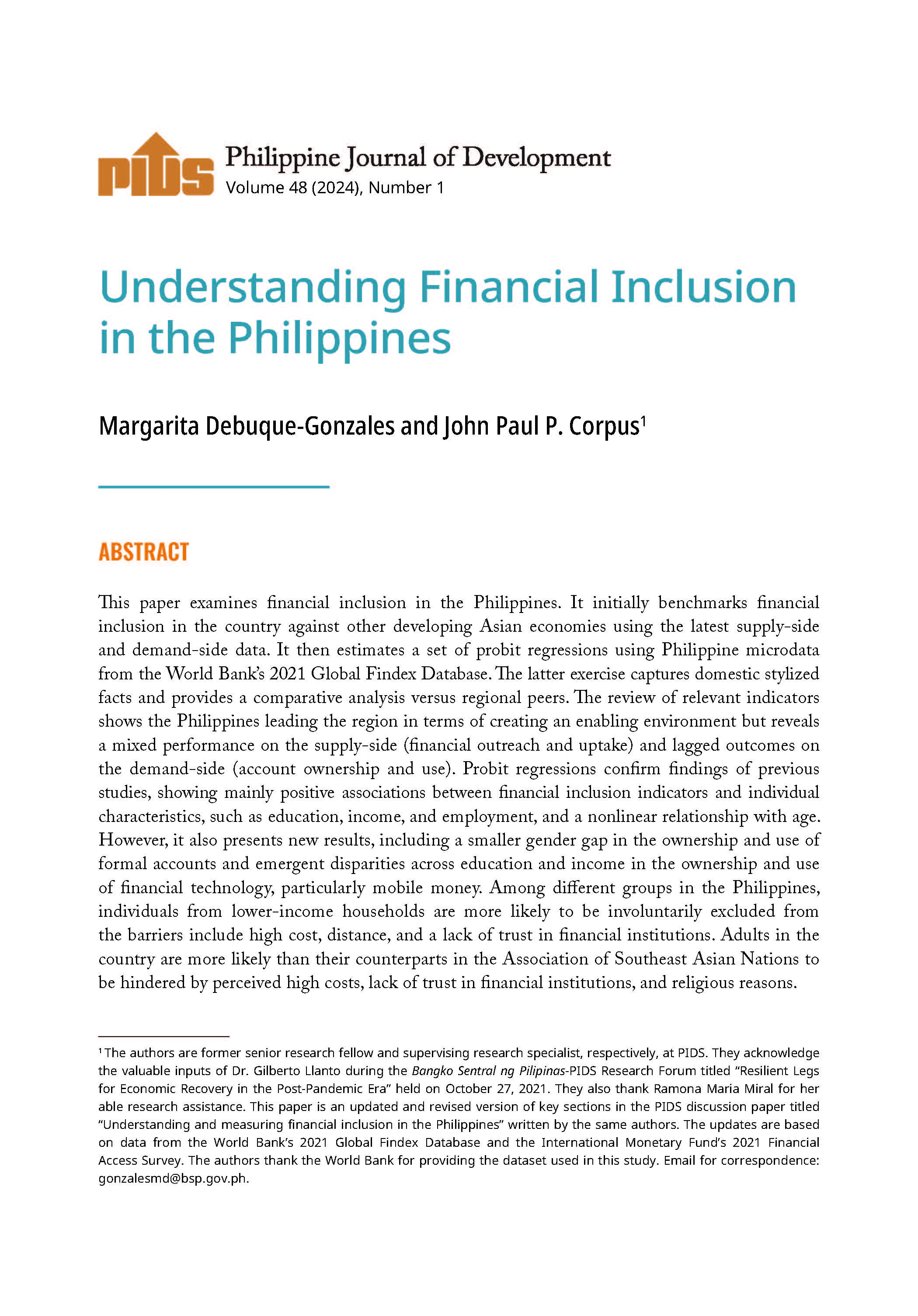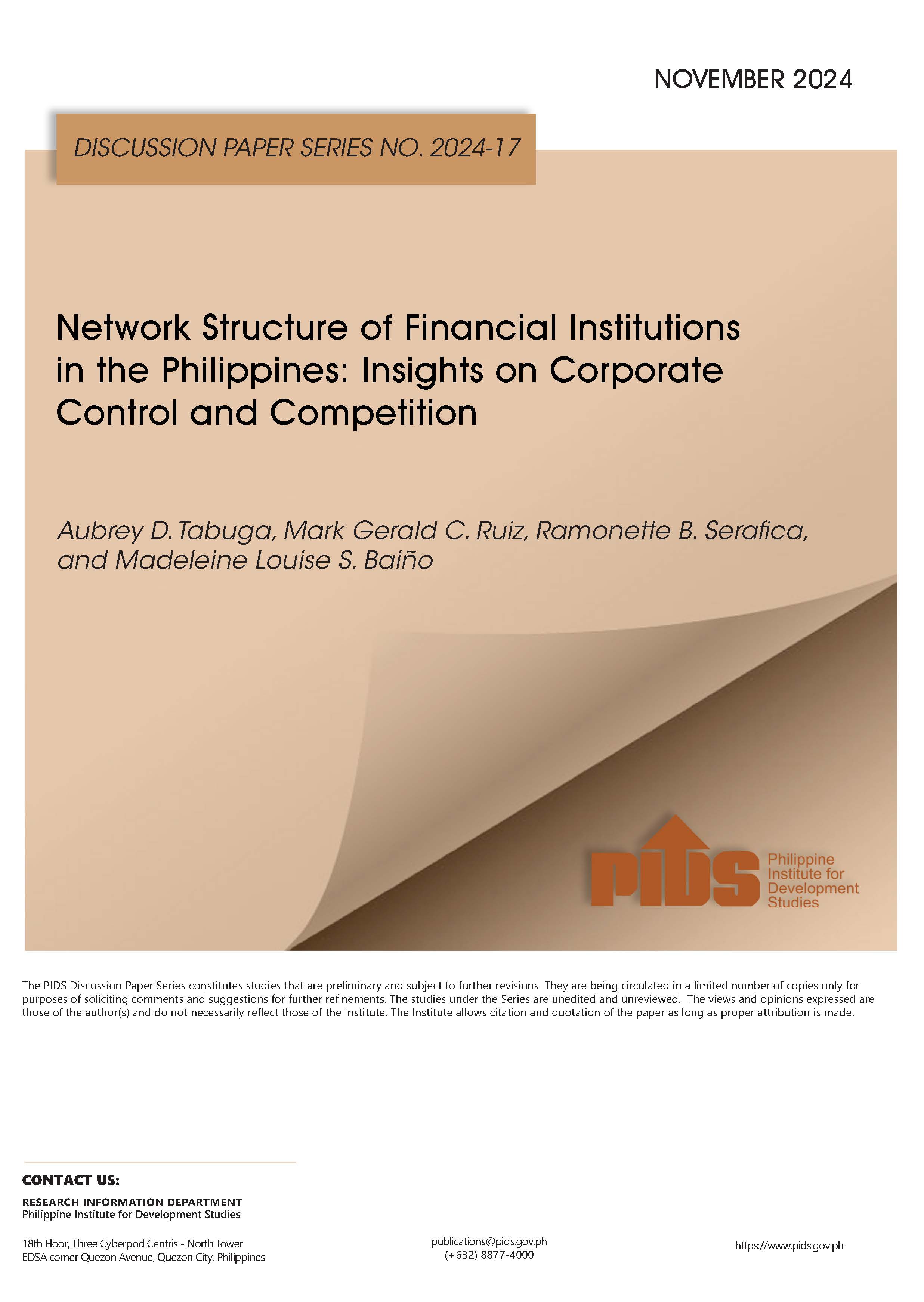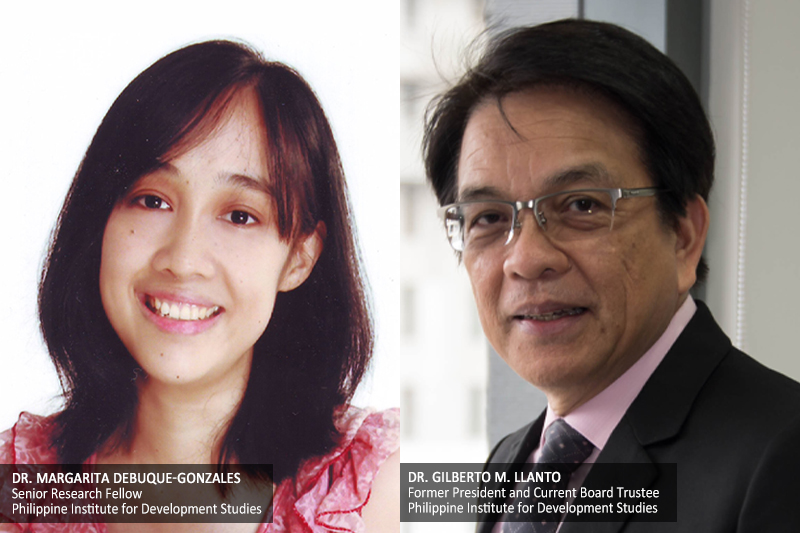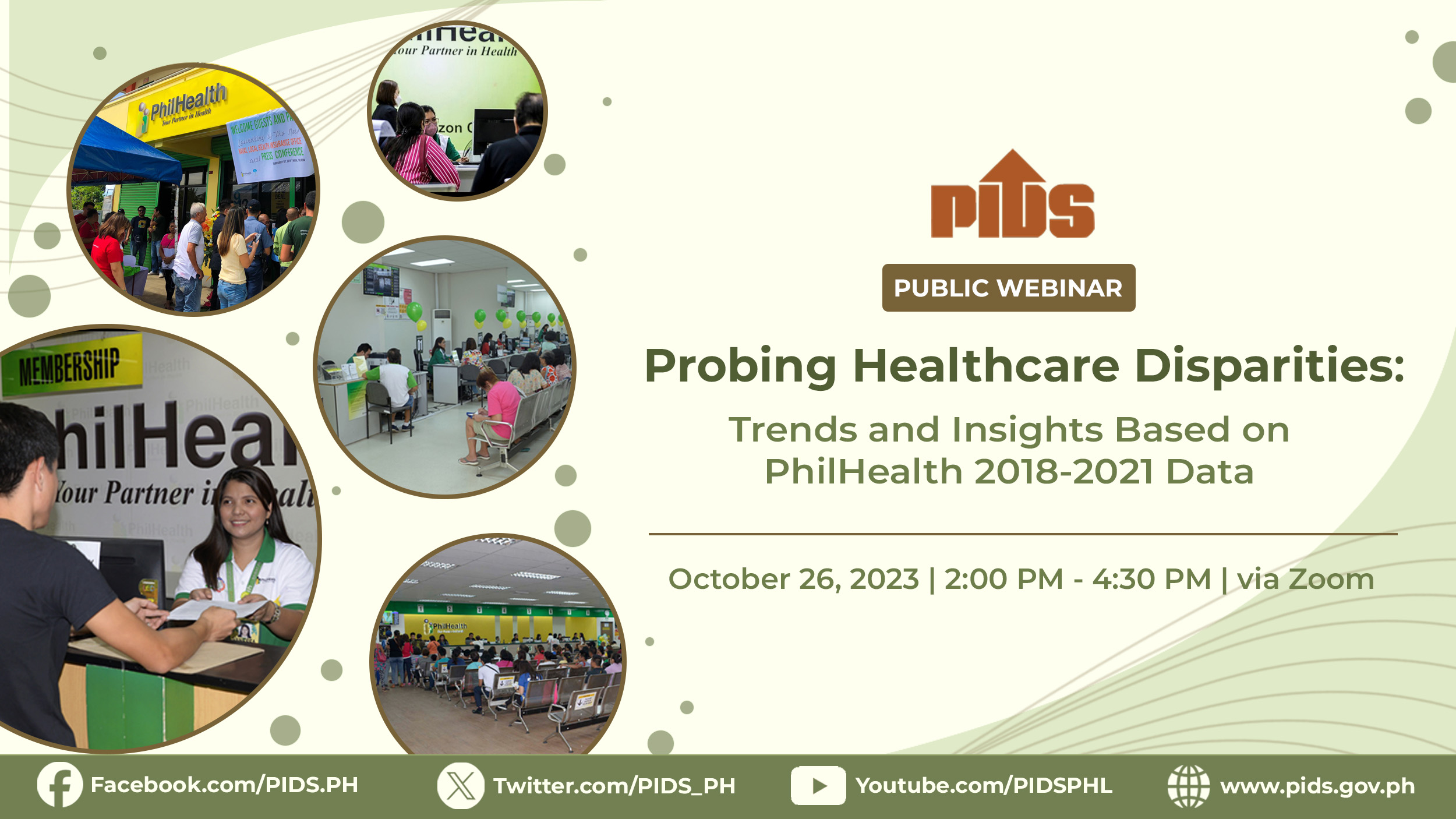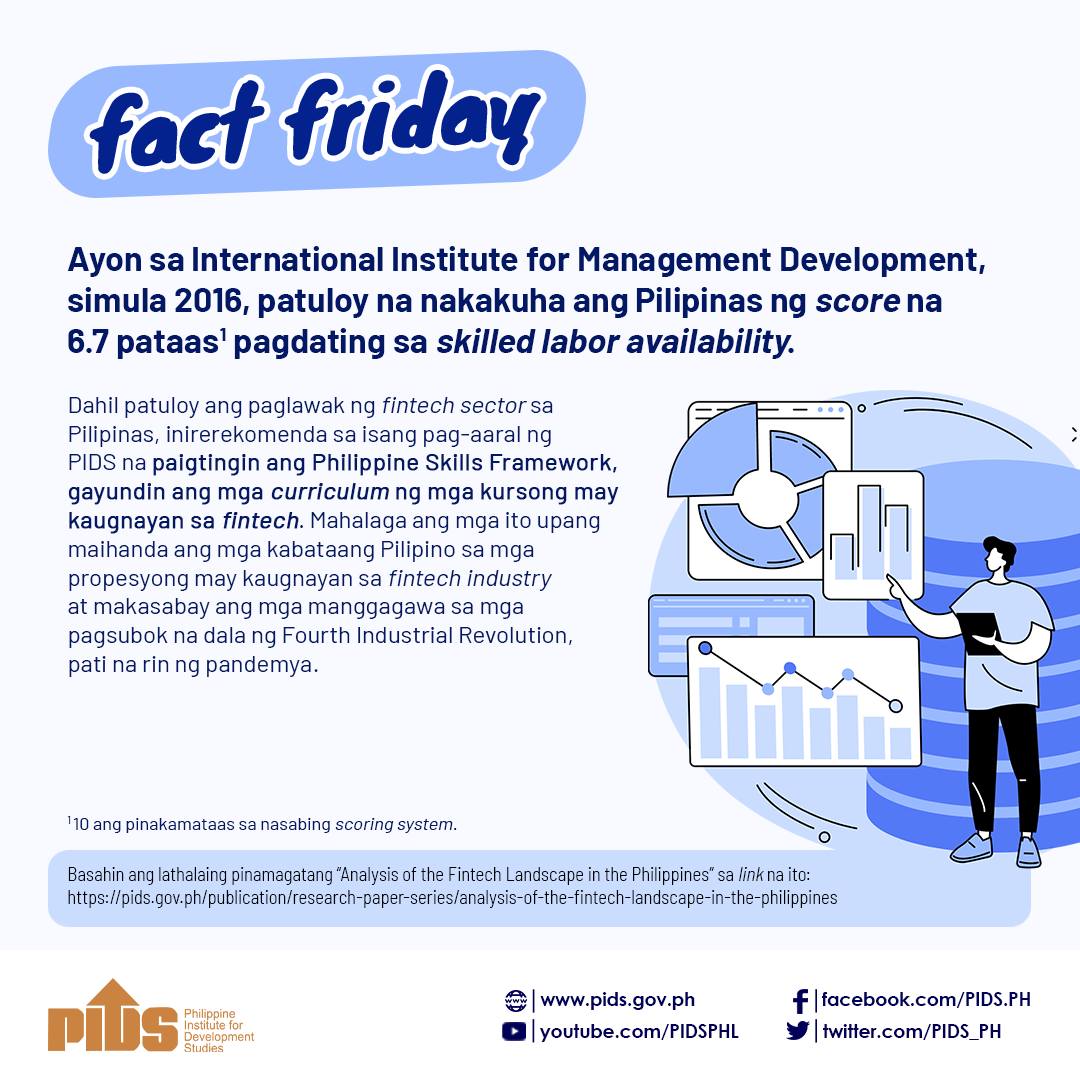Contributions to the Philippine Health Insurance Corp. (PhilHealth) may not be enough to cover lower income populations in the future, according to the Philippine Institute for Development Studies (PIDS).
In the study, titled “Who Wins and Who Loses from PhilHealth? Cost and Benefit Incidence of Social Health Insurance in a Lifecycle Perspective,” PIDS Fellow Michael R.M. Abrigo said PhilHealth is expected to face large financial deficits under the current system.
The system, he said, allows that over the course of an average Filipino’s lifetime, PhilHealth will lose about 40 centavos for every peso it collects as premium contributions.
“While surpluses may be generated from higher income populations, these may not be enough to cover the projected deficits from providing benefits to lower income populations into the future,” Abrigo noted.
“Benefits may need to be further increased to more greatly encourage pro-social health-seeking behavior, especially among the poor,” he added.
Abrigo said PhilHealth, as a pseudo-pension system, transfers resources from current workers to retirees for their health and medical needs.
However, he said, these need to be reassessed based on the capacity of current and future workers to shoulder the weight of financing these requirements.
This is taking into consideration the country’s demographics. While the country still has a young population, Filipinos are aging and will transition to an aging society in the next decade.
Abrigo also said that as a health-insurance program, PhilHealth needs to be actuarially fair given that population risks and utilization level of the system varies across the population.
“In all these potential roles, what is clear is that the current system of premium contributions and benefits payment is fiscally unsustainable in the longer term,” Abrigo said.
Under the current system, Abrigo said, poorer households receive more benefits compared to richer households, even if these households are ones shouldering the bulk of the premiums.
He said the poorest 63 percent of the population, comprising those who are at most high school educated, receive about 80 percent of all PhilHealth benefits. However, they only represent 53 percent of all premium contributions in 2019.
Meanwhile, Abrigo said, the richest 37 percent of the population only received 20 percent of all benefits paid. This despite providing 47 percent of all premium contributions in 2019.
“When taken separately, however, the incidence of PhilHealth contributions and benefits are not both progressive,” Abrigo said. “In this case, the incidence of PhilHealth benefits is progressive, while that for contributions is regressive.”
Further, Abrigo said, the contributions and benefits do not take into consideration the life cycles of PhilHealth costs and benefits across socioeconomic groups.
Based on the findings, Abrigo said an average Filipino is a net contributor until around the age of 40 and only becomes a net beneficiary starting after reaching the age of 55.
Taking into consideration the same age schedule of per capita contributions and benefits, Abrigo said differences in relative population sizes and age distributions of socioeconomic groups will affect the “relative progressivity” of PhilHealth as a reallocation system.
Abrigo said while those who reached primary education level comprised only 17 percent of the population, about 27 percent of them are aged 60 or older, while 55 percent are aged between 20 and 59.
Among those who reached at least high school, on the other hand, only 4.8 percent are aged 60 or older, while those aged 20 to 59 account for 50 percent.
Abrigo said given these socioeconomic considerations, at the age of 90, a person with no grade completed contributed P62,270 on average throughout his or her lifetime.
However, those who reached primary and high school levels would have contributed P99,770 and P113,290, respectively. A college-educated, on the other hand, would have contributed P217,040 over the same period given the age schedule of premium contributions in 2019.
In terms of benefits, those who have no grade completed are expected to have used P213,380 worth of health care services through PhilHealth until age 90, while those who have reached primary level would have expended P248,280 on average over the same period.
Further, those who reached high school and college level have lower lifetime utilization of PhilHealth at P209,840 and P171,450, respectively.
Abrigo added that the returns to PhilHealth is decreasing in socio-economic class among those who live until age 90.
For those with no grade completed, for every P1.00 of premium contribution gives a return of P3.4 in health-care services paid through PhilHealth, or a net benefit of around P150,000 conditional on surviving until age 90.
Those who reached college level, on the other hand, are expected to lose 20 cents to a peso, or a net loss of P45,600 if they survive over the same period.
“Those who have reached at most primary level are expected to be net- beneficiaries of PhilHealth in their early 30s and those who reached secondary level in their early 60s. College-educated population continues to be net contributors until age 90,” Abrigo said.
PIDS study urges PhilHealth to ‘manage’ financial deficits


